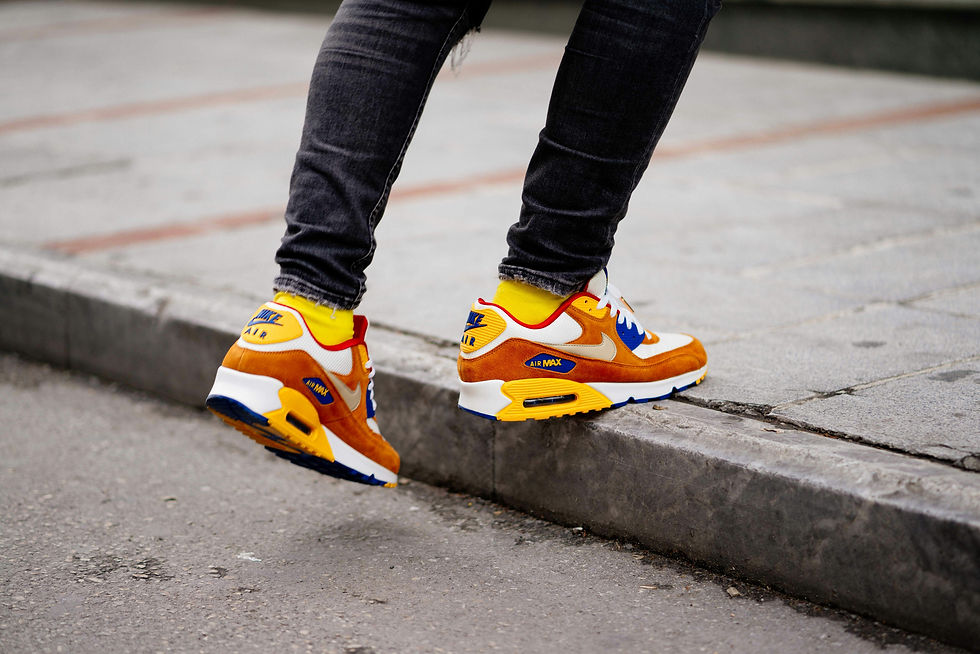Shoe Shape Matters
- #theshoelady

- Oct 27, 2023
- 4 min read
Updated: Nov 10, 2023
Do you think about the shape of shoes when buying a new pair, for you or your little one? Or do you think they’re all just shoe-shaped? I admit I didn’t used to give it much thought either, just accepted this was the way shoes were shaped. Now I know differently.
Footwear design has been fashion led, not foot led, for far too long, and our feet have suffered because of it.
We started out barefoot (still do!), then discovered feet could be protected from the cold and rough surfaces by wrapping them in animal skins, over time these foot coverings evolved and, at some point, their design became more about fashion than it did about feet. We now clad our feet with heavy, inflexible soles; surround them with structure and cushioning; add height with heels; and taper around the toes, to give a slimmer profile.

Our feet, like the rest of our bodies, are incredibly adaptable, and have adjusted to work within the confines of this restrictive footwear, but just because they can, doesn’t mean they are able to function effectively this way.
As with anything, it helps to understand the impact of restricting the natural movement of our feet and the difference choosing a more foot-shaped shoe can make, not only to the health of your feet, but your whole body.
Our feet are intricately designed for all the functions they are required to perform. They’re our connection with the ground, constantly sending data to our brain about our surroundings; they keep us upright, stable and balanced; they absorb impact; and they propel us around, enabling us to walk, run, jump, skip, dance, climb…
In this blog, I’ll focus on the toes and how a narrow toe box affects these functions.
Start by thinking about your fingers and how nimble they are. Your toes have the ability to be just as agile, but this can only be achieved through exercise to develop their strength and flexibility. All the time our toes are restricted in tight or overly-structured footwear, they’re rendered relatively immobile. The result can be joint stiffness, muscle weakness, limited range of movement, calluses, bunions, instability, misalignment of joints through the rest of your body and foot pain, among others!
Each foot forms a tripod, from the heel, to the base of the big toe and across to the balls of the feet to the base of the little toe. The wider this tripod, the more stable you will be. The more your shoes constrain your feet, pushing your toes together, the smaller this tripod and the more unbalanced you will become.
Squashing together the joints across the balls of your feet can create uneven contact with the ground, putting pressure on certain areas, potentially causing calluses, neuroma and a reduction of the vital sensory information reaching our brains.
Our big toes have a huge role to play in propelling us forward and activating our arch for shock absorption and stability. If our big toe is in the correct position, facing in the direction of travel, we’re able to harness all the power generated by the muscles of our legs to move us forward.
However, if our big toes are being pushed inwards, not only is their movement limited, some of this power will be lost and what remains will be channeled slightly off to one side. This misalignment could mean the rest of the joints in your leg; ankles, knees and hips, are also twisting slightly, potentially causing issues in these areas.
A compromised big toe is not able to mobilise the arch to do its job effectively. Essentially, the movement and function of the whole foot is inhibited.
So knowing this, look at your feet, and do this with your children too. Can you see a gap between each toe when standing? Can you spread your toes easily? Can you wriggle them around freely in all directions? Can you move your big toe up and down independently?
Now put your feet next to your shoes. Do the two look a similar shape? Do your shoes become narrower towards the front? (Hint: the majority do!) Perhaps after years of wearing restrictive footwear, your toes now taper too! An easy test, if your shoes have removable insoles, take these out and stand on them, do your toes go over the sides?
And finally, put your shoes on. Can you wriggle your toes with the same freedom you had without the shoes? Can you flex your foot easily?
Of course, we’re all tempted by beautiful shoes, even if they do cause us pain! However, next time you're buying shoes to wear most of the time, think carefully about the shape and how it compares to your feet. Give your toes freedom to flex and splay, and this will lead to stronger, healthier feet all round.
This is particularly true for children. If you notice their toes are beginning to crowd together, it’s more than likely their shoes are the cause. If caught early, and addressed with exercises and appropriately foot-shaped shoes, any damage should be reversed.
The vast majority are born with healthy feet and by choosing shoes wisely, you can help keep them this way.




Commenti